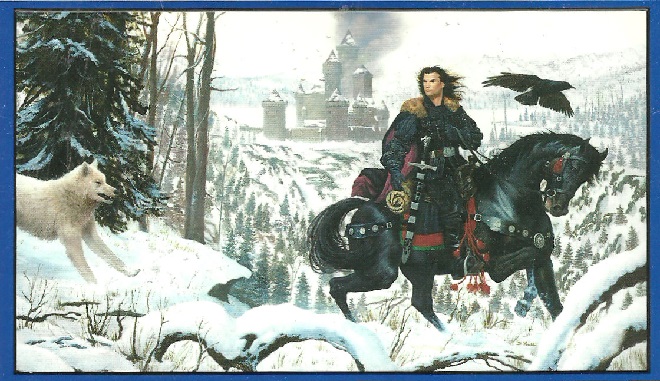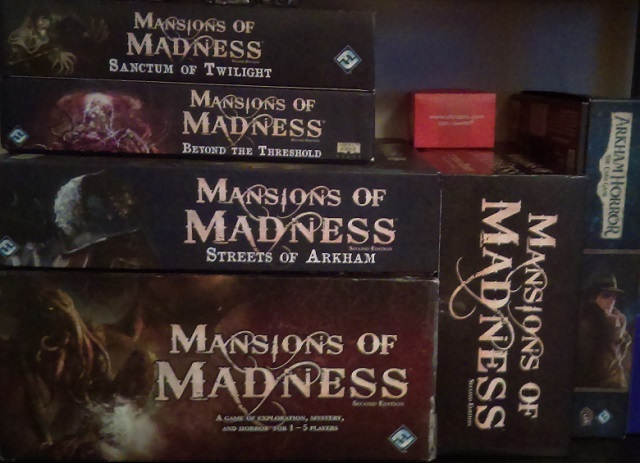
I first discovered A Song of Ice and Fire when I was twelve. My father and I used to go to Barnes and Noble almost every Friday. On one of these trips, I found George R.R. Martin’s work. I was drawn to the cool cover art (pictured above), and the excellent back cover blurb. Sadly, I only made it a few chapters in before I put the book aside. My young mind couldn’t keep up with all the different characters introduced in the first chunk of the tome. I made it roughly as far as half of the first episode but what I’d read stuck with me.
When Game of Thrones made its way to television years later, I found myself loving the story I’d been too young for on first exposure. I identified heavily with the show’s honorable protagonists defeated by their good nature in the face of morally flexible foes. I lived a watered-down version of Game of Thrones while serving on the executive board of my college fraternity. You wouldn’t think the power of a fraternity’s rule would drive men to madness, but in a few cases, it did. That’s fodder for a future novel though; this post is about a fantastic fantasy story.
*Minor Spoilers Below*
Sadly, my love of Game of Thrones was impeded in the last three seasons by its diversion from the books, and its occasionally sloppy execution of plot points (I mean…are we really supposed to buy Sansa not telling Jon she had an entire army coming in Battle of the Bastards? How many lives could she have saved!? And don’t get me started on my issues with Beyond the Wall). But I’m not here to complain. I’m here to celebrate and prognosticate.
After completely reading all the books and diving into Martin’s lore in the middle of the show, I, like many, discovered the total delight of A Song of Ice and Fire Theories. My favorites tend to revolve around Stannis Baratheon’s fool, Patchface. He’s basically cut from the show, but you should read up on him if you aren’t aware of the character. So, before the final season, I wanted to lay out a few of my own predictions, cobbled together from years of drinking too deeply of Game of Thrones and its lore.
Predictions
1. The Night King will skip Winterfell and fly to King’s Landing.
In Season Two, Dany saw a vision of a destroyed Red Keep covered in snow. Why show that if it’s not going to happen? Having the Night King save Winterfell for a later death would be a perfect surprise for early in the season. It would also be great to see Cersei go down unexpectedly amid all her schemes because she didn’t take the White Walker’s seriously.
2. Dany and all the dragons will die.
Unless the show leaves the White Walkers alive at the end of the series, I fully expect the forces of ice and fire to die out in their clashing. Jon is the balance between the two. There’s also the Azor Ahai legend that says the great hero who previously beat the Walkers needed to sacrifice his love to vanquish them in the Long Night. Jon’s current love is Dany.
3. Jon will be the final ruler left standing.
For the record, I actually like Dany more than Jon (at least in the show), but Jon is the namesake of the series (the song of ice and fire) so I think it’s all leading up to him being the great hero and final ruler left standing, but I don’t think he’ll choose to be king. See my next point.
4. The Iron Throne will be destroyed.
I think it’s obvious that the ultimate irony of the show will be having watched people fight for the right to sit there for years only for the final winner to discard the thing. It’s a chair for a conqueror, not a righteous ruler. If Jon wins out in the end, I expect him to move on from monarchy along with its greatest symbol in favor of a new form of government.
5. History is repeating itself. The protagonists have done all this before.
Okay, this is just my crackpot theory that I wanted to mention, but it feels like too many things that were discussed in Westeros’ history are coming back up. The mythical last hero’s story lines up with Bran Starks. Dany came to Westeros with three dragons and started her conquest from Dragonstone, like her ancestor. There are a bunch of other ones, but I’ll leave it there. I hope that this one remains a crackpot theory because it would make things weird if we found out in the last season that the characters are just stuck repeating an already established history, like Groundhog’s Day.




 The first time I got really “into” board games was in 2003. I received
The first time I got really “into” board games was in 2003. I received 




